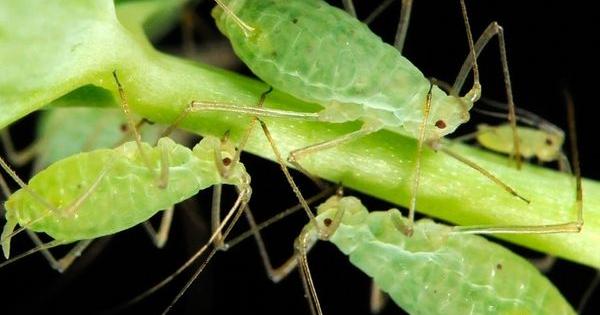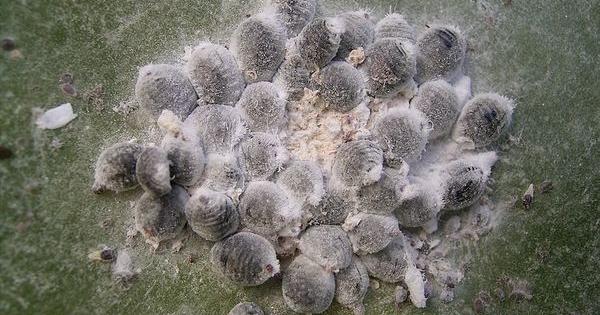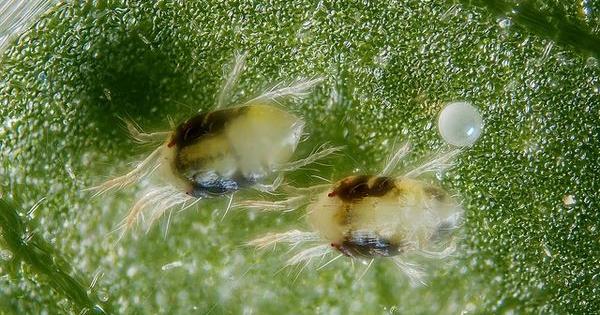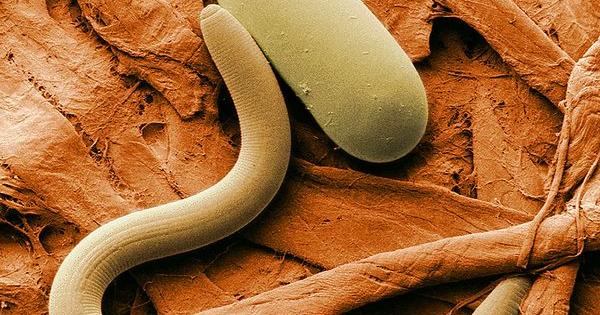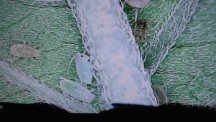Leaf miner
This is perhaps the most selective pest, as it does not attack all strains of cannabis in the same way. About two weeks after depositing eggs inside the leaves, the larvae begin to "dig" tunnels: this is the first visible sign that you must take action against them.
Symptoms
Brown lines that can be seen on the leaves when the larvae are making their peculiar tunnels, or mines, eating the plant material in their path. It is also possible to find small holes made by adult flies.
Treatment
It is unlikely to appear indoors, but if the leaf is not greatly damaged you can follow its path and remove the larva with your nails (it is "trapped" within the leaf). Outdoors you can choose insecticides, such as Spinosad, which should be used cautiously and only when there are no bees nearby. To get rid of adult specimens, which can continue laying eggs, there's nothing like some adhesive strips around the crop to catch them.
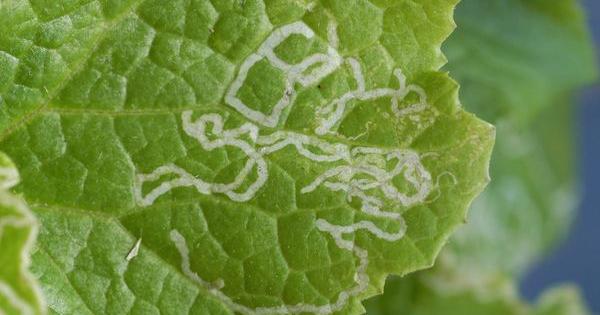
Red spider mites
This tiny insect, which usually occurs where humidity levels are high and on indoor plants, sucks the sap from the leaves and kills the cannabis plant in a short period of time: an adult spider can take a million nibbles in less than a month. If there are several of them, in one night they can wipe out an entire plantation.
Symptoms
White spots on leaves are the mark left by the red spider mite when it sucks the sap. You might also see black or yellow spots on both sides. Sometimes they are overlooked, and can be confused with a lack of nutrients. Some people confuse them, measuring just a few mm and ranging from brown to an orange red, with spots, so it is a good idea to use a magnifying glass. At times they also leave a kind of cloth on the leaves.
Treatment
Your growing space should be well cleaned and ventilated. The red spider mite thrives in dry areas and reproduces very quickly if the temperature exceeds 27 degrees. Therefore, keep the temperature below 25 degrees, and relative humidity at 55-60%. Once the plants or leaves affected are detected they can be cleaned with a mixture of alcohol and water, applied with an atomiser, and with the water constituting at least 40% of the liquid, to avoid damaging the leaves.
On the market there are different products to combat red spider mites. Neem oil, potassium soap and pyrethrum oil are very good choices. Another option is Ecotenona, diluting 2 ml of it per litre of water: it is applied on the leaves to penetrate the nervous system of the spider mite when it feeds. If you're not sure if the eggs or adults have survived, you'll need to use a different product.
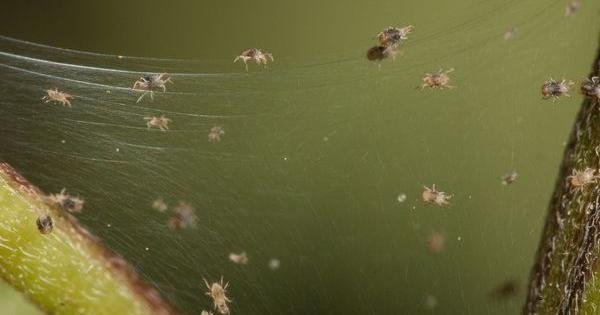
Caterpillars
Caterpillars need vegetation to form their chrysalis, so they can ruin your plantation in the blink of an eye, as they eat at a prodigious rate. Thus, when caterpillars appear on your cannabis plants it is important to act as soon as possible.
Symptoms
If you spot some very small eggs, yellow or translucent in appearance (especially on the back), and some tiny black droppings on your leaves, beware, as these are two of the clearest signs. You might also see teeth marks on your leaves. And you can even find rotten buds, as caterpillars are able to penetrate inside.
Treatment
Once detected, caterpillars can be removed by hand. The ideal approach is to combine this with an insecticide made from an infusion of pepper and garlic. Another option is to introduce wasps of the genus Trichogramma (widely used to control pests), the spined soldier bug (Podisus maculiventris), or a biological treatment containing Bacillus thuringiensis. When the plant begins to dry it must be turned over and thoroughly checked to verify that there is nothing left, as the pupae could stay in the room and return to attack the next crop.
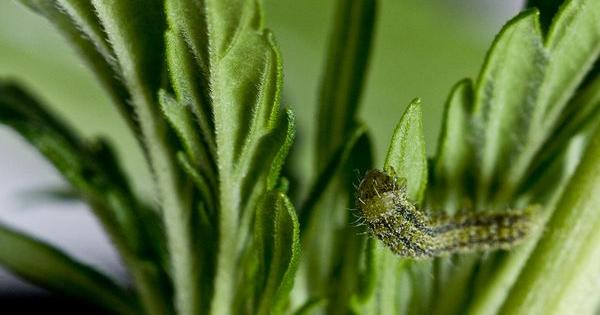
Thrips
A real headache, especially if the plants are from cuttings. This tiny insect is very fast, so you must act quickly to prevent it from doing damage. Occasionally spraying with Neem oil or potassium soap can be preventive, but if they are already wreaking havoc you will have to get down to work.
Symptoms
Using yellow sticky strips around your crop is a good way to know if there is a thrips plague, some are bound to get stuck to it. You'll also know you have it if you see silver markings on the surface of the leaves, sometimes accompanied by dots, which are droppings. Another sign is brittle leaves, as the thrips suck the chlorophyll until they are stuffed.
Treatment
Again, spraying with potassium soap or Neem oil will be useful to eradicate this pest, as long as the flowering process has not yet begun. If it has, you had better include predators, such as wasps or orius (insidious flower bug). These species are not affected by the Verticillium lecanii fungus that anti-thrips biological control products often contain, so they can be combined.

Whitefly
The whitefly, another old nemesis of cannabis cultivators, sucks the sap from the leaves to weaken the plants. It is very common, but it is not among the most lethal.
Symptoms
The first symptom is very clear: if you shake the plants and see flies flying off it, you've got them. You can also see how your leaves are yellowed by chlorosis due to their sucking of the saps, the honeydew that these insects secrete, or even a white powder on the underside of the leaves.
Treatment
Once these pests are discovered (there are preventive methods, such as planting repellent crops, like basil), you can use the Encarsia formosa wasp or Macrolophus caliginosus (a kind of stink bug). Another option is to attract flies with yellow strips, or spray with Neem oil or potassium soap; these solutions must be applied every five or six days until the flies are eradicated.
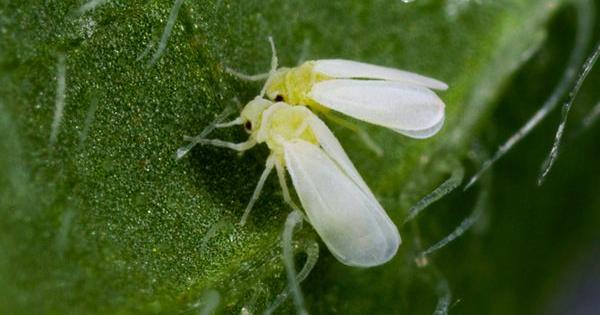
This is perhaps the most selective pest, as it does not attack all strains of cannabis in the same way. About two weeks after depositing eggs inside the leaves, the larvae begin to "dig" tunnels: this is the first visible sign that you must take action against them.
Symptoms
Brown lines that can be seen on the leaves when the larvae are making their peculiar tunnels, or mines, eating the plant material in their path. It is also possible to find small holes made by adult flies.
Treatment
It is unlikely to appear indoors, but if the leaf is not greatly damaged you can follow its path and remove the larva with your nails (it is "trapped" within the leaf). Outdoors you can choose insecticides, such as Spinosad, which should be used cautiously and only when there are no bees nearby. To get rid of adult specimens, which can continue laying eggs, there's nothing like some adhesive strips around the crop to catch them.

Red spider mites
This tiny insect, which usually occurs where humidity levels are high and on indoor plants, sucks the sap from the leaves and kills the cannabis plant in a short period of time: an adult spider can take a million nibbles in less than a month. If there are several of them, in one night they can wipe out an entire plantation.
Symptoms
White spots on leaves are the mark left by the red spider mite when it sucks the sap. You might also see black or yellow spots on both sides. Sometimes they are overlooked, and can be confused with a lack of nutrients. Some people confuse them, measuring just a few mm and ranging from brown to an orange red, with spots, so it is a good idea to use a magnifying glass. At times they also leave a kind of cloth on the leaves.
Treatment
Your growing space should be well cleaned and ventilated. The red spider mite thrives in dry areas and reproduces very quickly if the temperature exceeds 27 degrees. Therefore, keep the temperature below 25 degrees, and relative humidity at 55-60%. Once the plants or leaves affected are detected they can be cleaned with a mixture of alcohol and water, applied with an atomiser, and with the water constituting at least 40% of the liquid, to avoid damaging the leaves.
On the market there are different products to combat red spider mites. Neem oil, potassium soap and pyrethrum oil are very good choices. Another option is Ecotenona, diluting 2 ml of it per litre of water: it is applied on the leaves to penetrate the nervous system of the spider mite when it feeds. If you're not sure if the eggs or adults have survived, you'll need to use a different product.

Caterpillars
Caterpillars need vegetation to form their chrysalis, so they can ruin your plantation in the blink of an eye, as they eat at a prodigious rate. Thus, when caterpillars appear on your cannabis plants it is important to act as soon as possible.
Symptoms
If you spot some very small eggs, yellow or translucent in appearance (especially on the back), and some tiny black droppings on your leaves, beware, as these are two of the clearest signs. You might also see teeth marks on your leaves. And you can even find rotten buds, as caterpillars are able to penetrate inside.
Treatment
Once detected, caterpillars can be removed by hand. The ideal approach is to combine this with an insecticide made from an infusion of pepper and garlic. Another option is to introduce wasps of the genus Trichogramma (widely used to control pests), the spined soldier bug (Podisus maculiventris), or a biological treatment containing Bacillus thuringiensis. When the plant begins to dry it must be turned over and thoroughly checked to verify that there is nothing left, as the pupae could stay in the room and return to attack the next crop.

Thrips
A real headache, especially if the plants are from cuttings. This tiny insect is very fast, so you must act quickly to prevent it from doing damage. Occasionally spraying with Neem oil or potassium soap can be preventive, but if they are already wreaking havoc you will have to get down to work.
Symptoms
Using yellow sticky strips around your crop is a good way to know if there is a thrips plague, some are bound to get stuck to it. You'll also know you have it if you see silver markings on the surface of the leaves, sometimes accompanied by dots, which are droppings. Another sign is brittle leaves, as the thrips suck the chlorophyll until they are stuffed.
Treatment
Again, spraying with potassium soap or Neem oil will be useful to eradicate this pest, as long as the flowering process has not yet begun. If it has, you had better include predators, such as wasps or orius (insidious flower bug). These species are not affected by the Verticillium lecanii fungus that anti-thrips biological control products often contain, so they can be combined.

Whitefly
The whitefly, another old nemesis of cannabis cultivators, sucks the sap from the leaves to weaken the plants. It is very common, but it is not among the most lethal.
Symptoms
The first symptom is very clear: if you shake the plants and see flies flying off it, you've got them. You can also see how your leaves are yellowed by chlorosis due to their sucking of the saps, the honeydew that these insects secrete, or even a white powder on the underside of the leaves.
Treatment
Once these pests are discovered (there are preventive methods, such as planting repellent crops, like basil), you can use the Encarsia formosa wasp or Macrolophus caliginosus (a kind of stink bug). Another option is to attract flies with yellow strips, or spray with Neem oil or potassium soap; these solutions must be applied every five or six days until the flies are eradicated.


